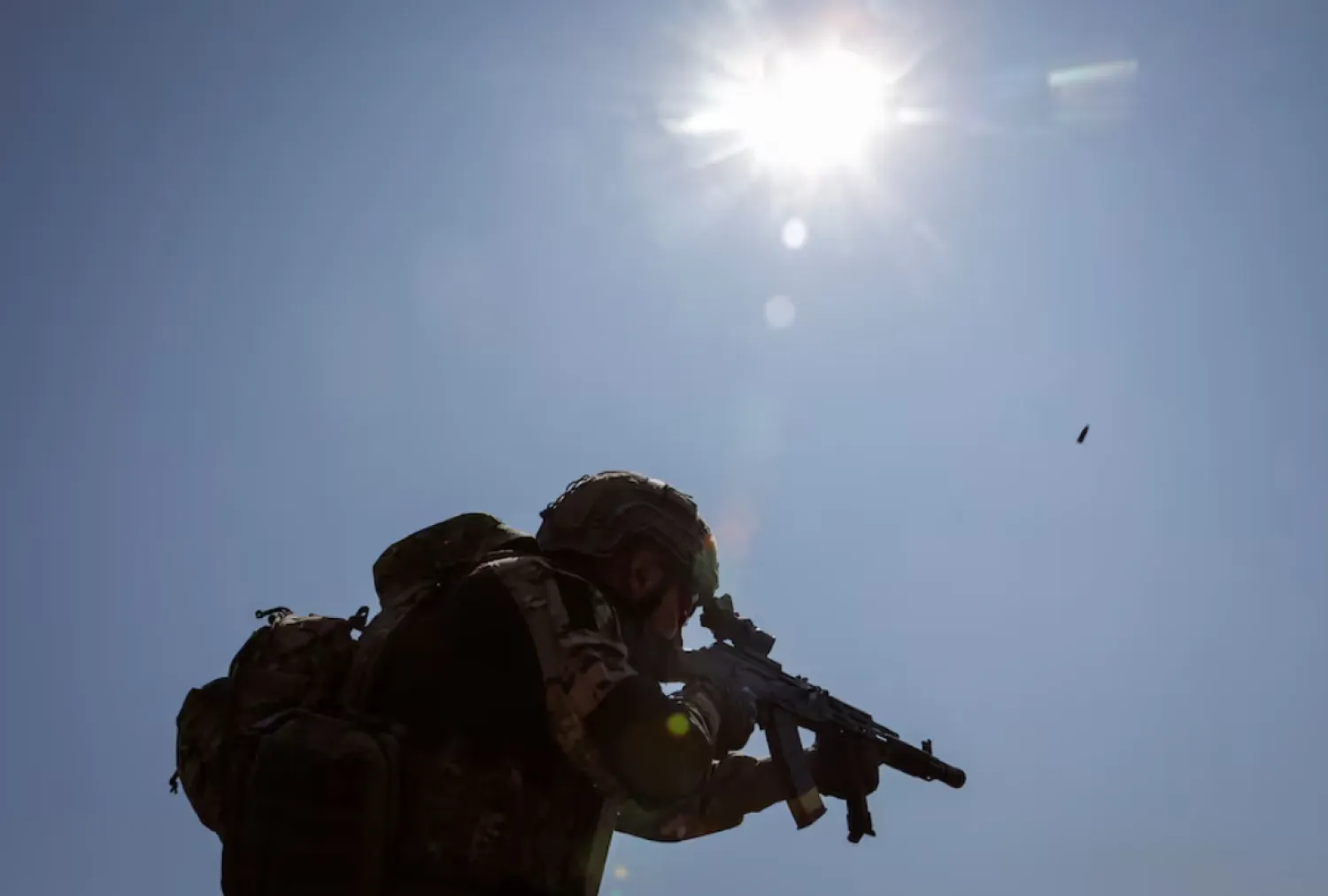On the 56th day of the Iranian riots, a senior security official expected the protests "to subside," while the Iranian judiciary threatened to establish courts to "firmly handle" those who cause "turmoil" or "commit crimes" during the anti-government protests sweeping the country.
The protests constitute one of the biggest challenges facing the country's rulers since the Islamic Revolution in 1979. Demonstrations against the regime have continued for eight weeks despite strict security measures and severe warnings issued by the security forces.
According to social media, the authorities escalated strict security measures in Tehran and deployed a group of policemen on horses to quell the protests.
The Iranian authorities used police cavalry to control the protests that erupted following the death of Mahsa Amini while the morality police were holding her.
Women led the protest movement, removing and burning their headscarves while chanting anti-regime slogans and confronting security forces in the streets despite the crackdown that killed dozens.
- Government denial
About two months after the protests, numerous videos on social media showed security forces using live ammunition, tear gas, and even paintballs.
The government imposed Internet restrictions, including blocking access to Instagram and WhatsApp, and waged a campaign of mass arrests.
Government spokesman Ali Bahadori Jahromi said, "it would have been a piece of cake for police forces to use live rounds on the protesters," and people would be afraid to leave their homes.
Jahromi argued that the government will not resort to such actions because youths on the streets are not enemies but "our wrongdoer children."
The state-run Mehr news agency quoted the Head of Passive Defense, Brigadier General Gholamreza Jalali, saying that the "sedition and riots" are subsiding, noting that the violence has overpassed terrorism.
Sit-ins were renewed in several universities in Tehran.
The Human Rights Activists News Agency (HRANA) published the students' chant "Death to the regime" and "there will be deaths among the IRGC ranks."
Meanwhile, the former professor at Tehran University, Zahra Rahnavard, wife of reformist leader Mir Hossein Mousavi, called for ending the crackdown on protesters, including students.
Rahnavard, who has been under house arrest with Mousavi since February 2011, called for releasing all detained students and stopping threatening, depriving, and expelling students.
Vice-president for parliamentary affairs Mohammed Hosseini was interrupted by angry students during a speech at Tarbiat Modares University in central Tehran. Hosseini was trying to restore calm and contain the situation at the universities.
The state-run ISNA news agency said the students chanted "Women, Life, Freedom" and "Release the detained students."
Hosseini addressed the students and asserted that he was there to listen to them, noting that a university is a place for dialogue, and there is no need to chant slogans if things are discussed within reason.
The lawmaker commented on requests to hold a referendum on the policies, precisely the form of the regime, similar to the referendum that took place after the 1979 revolution. He said that the Iranian regime is the only one elected based on a referendum. However, the system's origin cannot be put to a referendum.
- Overthrow and disintegration
Presidential advisor on legal affairs Mohammad Dehghan said the recent developments in Iran were "beyond protest" and that the enemy seeks to use the unrest to disintegrate Iran.
Dehghan warned that the enemy, using everything in its power, especially the media, is seeking to disintegrate Iran through regime change.
The call for a new referendum was first made by Iran's leading Sunni cleric Molavi Abdulhamid, based in the south-eastern city of Zahedan.
Abdulhamid condemned the Iranian state for making accusations of "separatism" against the protesters, asserting: "we are all Iranians, and we feel brotherhood."
He blamed the officials' performance saying that 43 after the revolution, women, sects, and minorities faced discrimination and inequality.
Iranian officials accuse the United States of inflaming tensions, and hardliner lawmakers urged the judiciary to "deal decisively" with the perpetrators.
HRANA reported that nearly 15,000 had been arrested, pointing out that 429 university students had been charged.
The organization said late Monday that the death toll had reached 321 people, including 50 children, in 136 cities and 135 universities that witnessed protests.
The organization indicated that 38 members of the police forces, Basij forces, and security services had been killed in the campaign.
The judiciary vows
Judiciary spokesman Masoud Setayeshi said the court is about to issue a verdict against the two journalists, Niloofar Hamedi and Elaheh Mohammadi, who are detained in Evin prison.
During his weekly press conference, Setayeshi said that Hamedi and Mohammadi are under pre-trial detention for propaganda against the regime and conspiracy against national security.
Last week, Iranian intelligence accused the two journalists of being "foreign agents" and considered their status as journalists nothing but a "cover."
Hamedi worked for the pro-reform Sharq daily and was the first to signal to the world that all was not well with Amini with a photo of her parents hugging each other in a Tehran hospital.
Mohammadi covered Amini's funeral in Saqez, where the protests began.
Setayeshi asserted that Iran's courts would deal firmly with anyone who causes disruption or commits crimes during a wave of anti-government protests.
More than 1,000 people have been indicted in Tehran Province alone in connection with what the government calls "riots."
"Now, the public, even protesters who are not supportive of riots, demand from the judiciary and security institutions to deal with the few people who have caused disturbances in a firm, deterrent, and legal manner," Setayeshi said.







